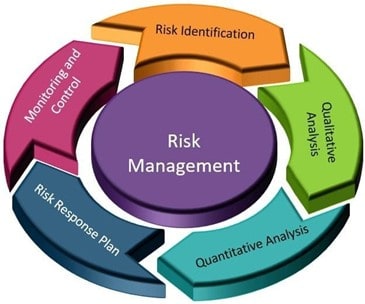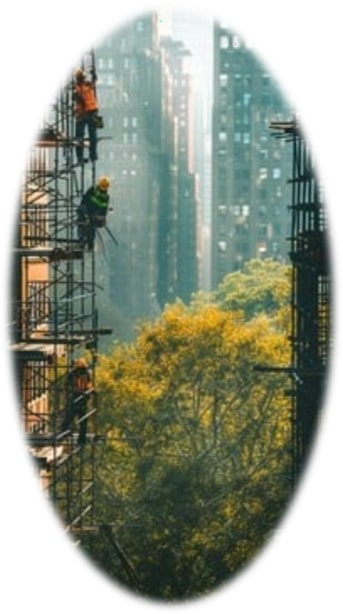3.0 Section 3.0: Understanding and Managing Risk in Rope Access
In rope access, risk is constant — whether from falling objects, uncontrolled descents, unstable façades, or even unpredictable weather. Unlike ground-based trades, rope technicians work in dynamic vertical environments with limited margin for error. Managing those risks begins with a systematic understanding of hazard identification, site-specific analysis, and environmental awareness. This section trains you to anticipate the most common — and often most dangerous — hazards that affect high-rise rope access work.

3.1 Hazard Identification on High-Rise Façades
Hazard identification is the first step in any safe rope access operation. Before rigging or working on ropes, workers must assess the environment for anything that could lead to:
- Injury
- Equipment failure
- System disruption
- Harm to the public
Common High-Rise Hazards:
|
Type |
Example |
|
Structural |
Loose cladding, cracked windows, sharp edges, rusted parapets |
|
Type |
Example |
|
Mechanical |
Operating BMUs, HVAC vents, elevator shafts, rotating signage |
|
Environmental |
Wind gusts, lightning, solar glare, precipitation, ice |
|
Human |
Poor communication, pedestrians below, building occupants interfering |
|
Material |
Falling tools, unsecured buckets, rope abrasion or entanglement |
Every hazard should be documented, rated by severity and likelihood, and addressed through control measures.
3.2 Job Hazard Analysis (JHA)
A Job Hazard Analysis (JHA) — also called a Job Safety Analysis (JSA) — is a structured document that breaks a job into tasks and identifies hazards for each.
A JHA Should Include:
- Step-by-step breakdown of the job (e.g., rigging anchors, descending, cleaning)
- Hazards associated with each step
- Controls to eliminate or mitigate each hazard Examples of Controls:
- Installing drop zones and warning signage below work area
- Using edge protection on all parapet contact points
- Scheduling work during low wind conditions
- Assigning a spotter or standby rescue tech
JHAs are legally required for rope access under many company policies and strongly recommended under CSA ZS1 and O. Reg. 213/S1.
3.3 Environmental & Operational Hazards
Certain risk factors are unique to high-rise rope access due to exposure and elevation.
A. Weather
|
Condition |
Risk |
|
Wind > 25–30 km/h |
Swinging, rope drift, loss of control |
|
Lightning |
Electrical strike risk on rope and metal components |
|
Snow/Ice |
Slippery ropes, anchors, glazing |
|
Extreme heat |
Harness rash, dehydration, poor grip |
Weather thresholds must be included in the rescue plan and communicated during toolbox talks.
B. Mechanical Interference
- Active BMUs and davits may swing or move unexpectedly
- HVAC exhaust vents can blast hot air, steam, or chemicals onto workers
- Nearby construction cranes may cause rope entanglement or distraction
- Building-mounted antennas or signage may create electrical or physical hazards
Always verify with building maintenance that mechanical systems are locked out or controlled during rope access.
C. Pedestrian Safety
- Public and building occupants must be shielded from falling tools or debris
- Use:
- Ground-level barricades or exclusion zones
- Overhead canopies or drop nets
- Spotters or flaggers at entry points

Never work above publicly accessible areas without physical protection in place.



